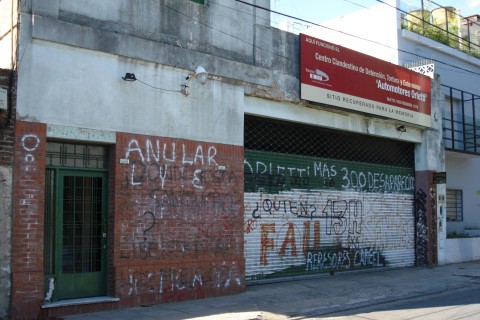Automotores Orletti
Summary
Data
Alias
"El taller", "El jardín", "La cueva de la vía" o "La cueva de Flores"
Type of place
Location
Country
Address
Venancio Flores 3519/21, esquina Emilio Lamarca
Institutional responsibility
Secretaría de Inteligencia del Estado (SIDE)
Batallón de Inteligencia 601
Operating period
11 de mayo y el 3 de noviembre de 1976
Current situation
Sitio de memoria
Place ID
SMLG-ARC-01
Related victims
| Ficha de víctima #260 - Nores Montedónico, María del Pilar |
| Ficha de víctima #261 |
| Ficha de víctima #262 |
| Ficha de víctima #263 |
| Ficha de víctima #264 |
| Ficha de víctima #265 |
| Ficha de víctima #214 |
Ficha de víctima #215 - Rutila Artes, Carla Graciela  |

